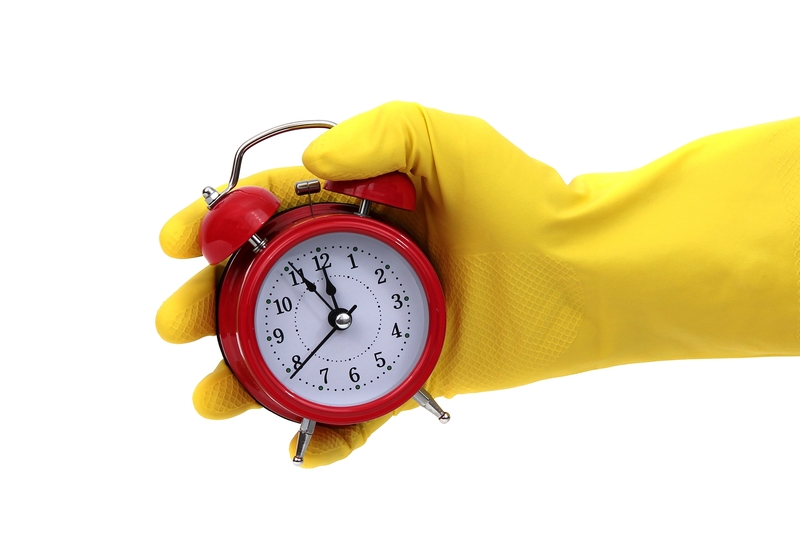The Best Approaches for Tackling Damp Smells
Posted on 11/06/2025
The Best Approaches for Tackling Damp Smells
Damp smells are persistent and unpleasant odors that frequently invade homes, basements, laundry rooms, and even vehicles. Whether caused by excess moisture, poor ventilation, or hidden mold growth, that musty scent can quickly become both a nuisance and a health concern. Addressing these odors promptly is crucial for maintaining a fresh, healthy, and welcoming environment. In this comprehensive guide, we'll explore the best methods for eliminating damp odors, tackling their root causes, and ensuring your living spaces remain odor-free.
Understanding the Causes of Damp Odors
To successfully remove damp smells, it's essential to understand what causes them. Moist conditions create a thriving environment for mold, mildew, and bacteria--all of which can generate unpleasant odors. These conditions can arise from:
- Leaking pipes or fixtures
- Poor ventilation in rooms and crawlspaces
- Flooding or water damage
- Condensation on windows or walls
- Poorly dried laundry
- Damp building materials, such as wood and drywall
Identifying the underlying cause is the first step toward resolving any persistent musty or wet smell in your property.

Effective Strategies to Eliminate Damp Smells
1. Pinpoint and Remove Moisture Sources
Start your battle against musty odors by identifying the source of moisture. Check areas where water might accumulate or leaks might go unnoticed:
- Inspect pipes, faucets, and connections for leaks
- Look for water stains on ceilings, walls, and floors
- Check behind appliances (washing machines, dishwashers, fridges)
- Monitor basements and crawlspaces after heavy rain
Once the source of dampness is discovered, take appropriate action: repair leaks, clean gutters, and dry up affected areas promptly to prevent further musty odors.
2. Increase Ventilation and Airflow
Improving ventilation is a critical step in removing damp smells and reducing humidity:
- Open windows and doors regularly to allow air circulation
- Install extractor fans in bathrooms, kitchens, and laundry rooms
- Use ceiling and portable fans to boost airflow
- If possible, create cross-ventilation by opening windows on opposite sides of the room
Stale, stagnant air can amplify damp odors, so fresh air is your best ally against mustiness.
3. Utilize Dehumidifiers and Moisture Absorbers
In areas prone to high humidity, a dehumidifier is indispensable. Dehumidifiers remove excess moisture, discouraging mold and odor-causing bacteria:
- Choose the right-sized dehumidifier for your room
- Empty water collection trays regularly
- Use desiccants like silica gel or moisture-absorbing crystals for cupboards and wardrobes
Regularly using a dehumidifier is one of the most effective approaches to eliminate damp odors in any climate.
4. Thorough Cleaning of Affected Areas
Damp smells can linger in fabrics, carpets, and porous surfaces. To refresh your space:
- Wash soft furnishings, curtains, and cushion covers
- Steam clean carpets and rugs
- Wipe hard surfaces with an anti-mold solution
- Use a vacuum with a HEPA filter to trap mold spores and allergens
Cleaning not only removes visible dirt but also targets odor-producing microbes, ensuring a healthier environment.
5. Target and Treat Mold and Mildew
Mold and mildew are frequent accomplices of musty odors. If you spot mold growth:
- Wear gloves and a mask to protect yourself from spores
- Scrub non-porous surfaces with a mixture of bleach and water (1 cup bleach to 1 gallon of water)
- For natural alternatives, use white vinegar or baking soda solutions
- Replace or dispose of items with extensive, set-in mold (such as drywall or insulation)
Treating mold promptly prevents structural damage and dramatically reduces persistent damp smells.
6. Neutralize Odors Naturally
Sometimes, even after cleaning, a faint damp smell can linger. To neutralize odors without harsh chemicals, try:
- Placing open bowls of baking soda or activated charcoal in musty areas
- Using vinegar sprays for fabric and upholstery
- Setting out coffee grounds or dried lavender sachets for a pleasant scent
- Boiling citrus peels and letting the aroma circulate
Natural deodorizers are eco-friendly and safe for homes with children and pets.
Preventing the Return of Damp Smells
1. Maintain Good Air Quality Year-Round
Keep your home's humidity level below 60%, especially in basements and attics. Use humidity sensors to monitor moisture and maintain optimal air quality to prevent mustiness from returning.
2. Fix Structural Issues
- Seal cracks in walls and floors
- Maintain roof tiles and flashing to prevent leaks
- Ensure proper drainage around your property
- Install or check damp-proof courses, if necessary
Structural repairs and regular maintenance are vital for keeping moisture--and the resulting damp odor--out of your home once and for all.
3. Regularly Inspect and Maintain HVAC Systems
Air conditioning units and heating systems can harbor moisture if not cared for properly. Schedule annual inspections, replace filters frequently, and have ducts cleaned based on manufacturer recommendations. Clean HVAC systems promote better indoor air quality and can noticeably diminish persistent moisture-related smells.
4. Improve Home Insulation
Good insulation helps maintain even temperatures and minimize condensation. Pay special attention to:
- Attic and loft insulation
- Wall and floor insulation
- Double-glazed windows
Effective insulation curbs condensation--a common culprit behind damp odors--especially in older homes.
Room-by-Room Tips for Tackling Damp Odors
Basements and Cellars
- Use a high-capacity dehumidifier
- Store items on shelves, not floors
- Paint walls with mold-resistant paint
- Install a sump pump for flood-prone areas
Bathrooms
- Always use an extractor fan during and after showers
- Wipe down tiles and ensure grout is sealed
- Hang towels and wet mats to dry fully
Kitchens
- Keep sinks and under-sink cupboards dry
- Ensure dishwashers seal properly
- Store food in airtight containers to prevent excess moisture
Bedrooms and Living Areas
- Open windows regularly
- Use moisture absorbers in wardrobes
- Air out bedding, pillows, and mattresses
- Vacuum and clean carpets routinely

When to Call a Professional
Sometimes, musty odors persist despite your best efforts, hinting at hidden or extensive mold. If you notice recurring damp smells, water stains, or visible mold patches, consider seeking expert help:
- Professional mold inspectors use infrared cameras and moisture meters to locate hidden issues
- Remediation specialists can safely remove hazardous mold and restore damaged structures
- Structural engineers can assess and repair severe damp or water ingress problems
Prompt professional intervention can prevent health risks and safeguard your home from long-term damage.
Conclusion: Enjoy a Fresher, Healthier Home
Dealing with damp smells can feel overwhelming, but a systematic approach makes all the difference. From identifying and fixing moisture sources to regular cleaning, dehumidifying, and maintaining your home, you can banish musty odors and enjoy fresh, inviting living spaces. Stay vigilant with these proven tactics--and don't hesitate to add natural odor-neutralizers and professional help as needed. Your quest for a damp-free, odorless home is not only achievable but essential for well-being, comfort, and peace of mind.
By embracing these best approaches for tackling damp smells, you're protecting your investment, your health, and your quality of life. Say goodbye to musty odors and welcome a cleaner, brighter home today!




